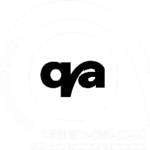Pictures tell a thousand words.
This summer World Renew offers a gallery of images from nine countries, giving you a close up look at communities engaged in the work of renewal and building resilience.
Proud Cambodian farmer stands in his SRI (system of rice intensification) rice field to show how vigorously his rice is growing because he has added compost, planted the plants at 25 cm spacings when they were less than 2 weeks old, carefully selected the best seeds, etc. (CAMBODIA)
World Renew’s reconstruction and rehabilitation response continues after Typhoon Haiyan struck the Philippines in November 2013. (PHILIPPINES)
A family prepares broom grass to sell to the truckers who buy it from them. This is a way for families to earn some cash in the months of January and February. (LAOS)
At learning plots we call “farmer field schools” groups of villagers come together to learn with World Renew staff. Foods Resource Bank has helped us with funds for this work. Here they are experimenting with a simple, low-cost tube pump that can raise water if the rise required is not too high. This helps extend the growing season into the dry season. The farmers also had to dig the pond to catch the rainwater and hold it. (CAMBODIA)
Composting with earthworms. The worms can add protein to the fish ponds or to the chickens. The compost enriches the soil for the crops and replenishes the micro-organisms that make for healthy soil and help make nutrients more easily absorbed by crop roots. (CAMBODIA)
Cambodia evaluation, Making it fun!: “Take a walk and bring back 3 things that symobolize important achievements in the development work in this community.” Here one of the groups returned with a full sheaf of rice to show their happiness with the results of SRI rice. + some green vegetables to show their happiness with having more vegetables – lasting into the dry season. (CAMBODIA)
SRI rice at young stage – note how it is planted on about 25 cm spacing. This permits more tillering and easy cultivation to aerate the roots. World Renew’s experiences with SRI methodology started in Cambodia and then we spread it to Bangladesh, India and Laos. (CAMBODIA)
These kids are students in a primary school that was started by their parents. Their parents are empowered members of a Peoples’ Institution. The parents grew weary of the lack of accountability of the teachers in the government-run primary schools. They said: “Just because we are poor does not mean our kids should have a poor education.” So, they set up their own school and hired their own teachers. (BANGLADESH)
Agricultural Evaluation: Interpreting the meaning of photos and comparing them to one’s own reality is one good participatory
evaluation technique. Here James Zwier, former World Renew staff, is examining the photo in the home of Lao farmers. (LAOS)
Malto children in Jharkand State, seated in Sunday morning church service. They were part of the Maternal-Child Survival program that World Renew did there in partnership with EFICOR. This is one of the poorest areas that World Renew staff have ever seen in this work. It was very moving to see the offerings given in this service: little bags of rice or corn. (INDIA)
A Khmu woman working on a loom to make a typical Lao skirt, similar to the one she is wearing. (LAOS)
Sack gardens show a simple way to get flood resistance. They also give drought resistance. (CAMBODIA)
Village water pump. We find that water is such a huge community development theme. (So, the sub themes of ponds, wells, pumps, sacks, drainage, etc.) Some years ago, with FRB support and village support, we helped villages dig wells and install pumps. (CAMBODIA)
Sack Garden in Cambodia. (CAMBODIA)
Kohima Daring: Doing her happy faciliation – where she engages people in the respectful dialogues that are at the heart of participatory community development. (BANGLADESH)



